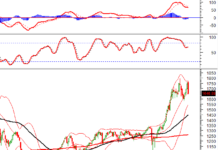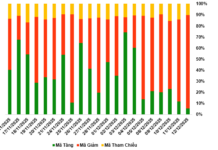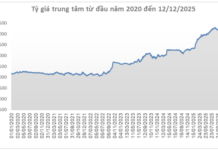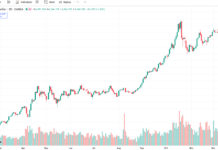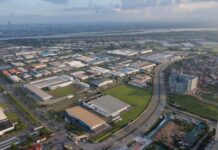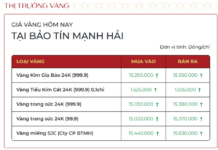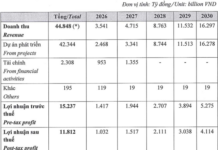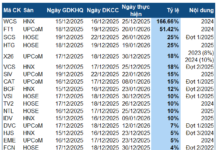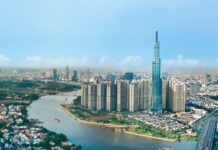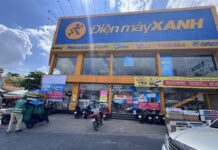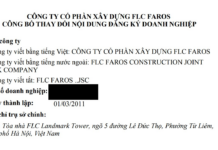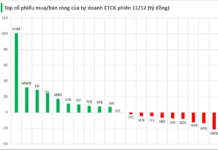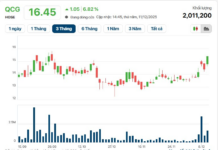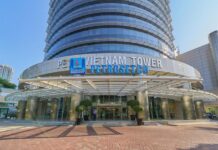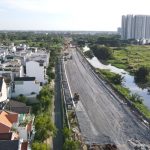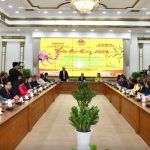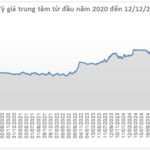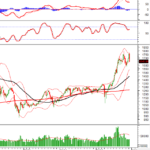Experts believe that this master plan will be a crucial foundation for Ho Chi Minh City to meet expectations and become a leading economic, financial, and scientific hub in the region, as well as the country’s economic engine.
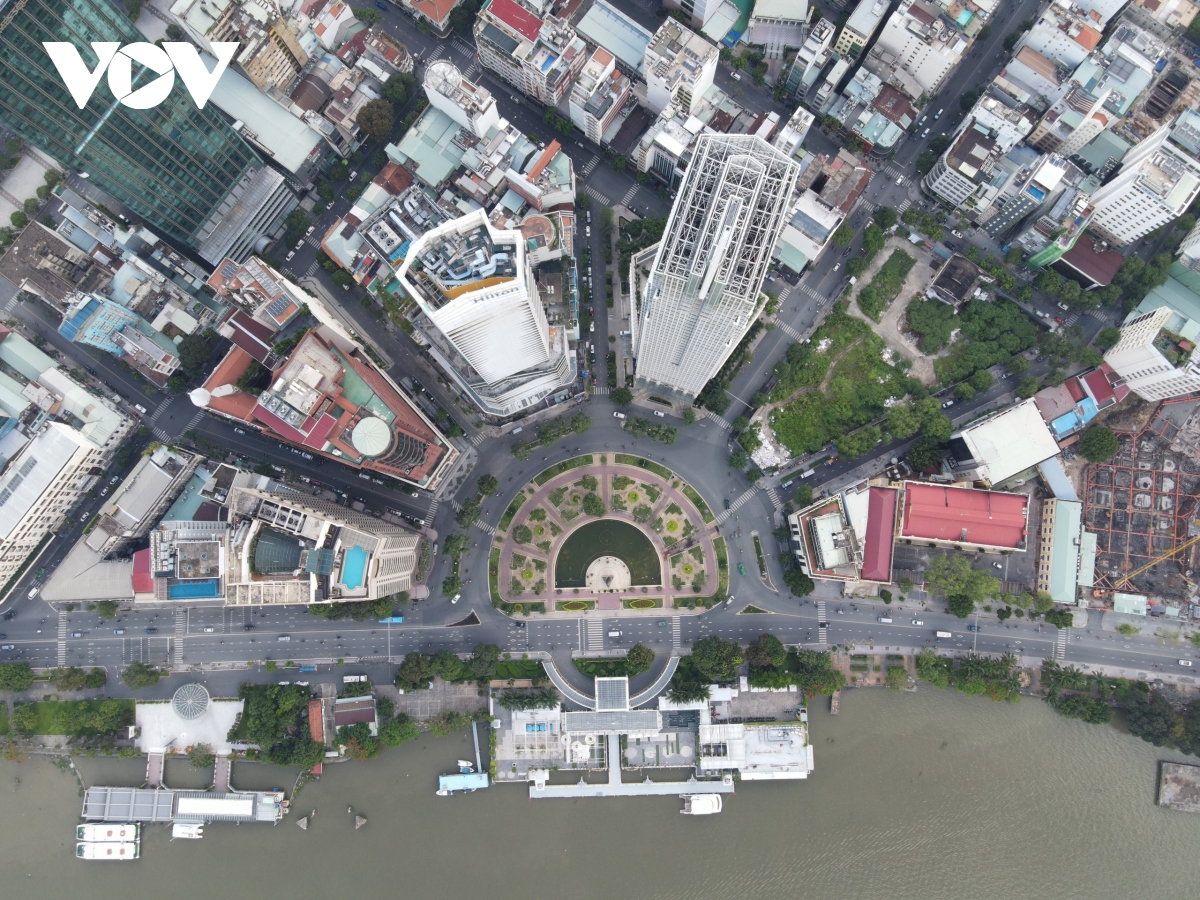
Ho Chi Minh City aims for double-digit growth with effective planning (Illustration: T.A)
A Guiding Light for the City’s Development
Referring to the proposal’s contents, numerous experts and researchers agree that its orientations, such as elevating the city to a global city, an international financial and exhibition hub, a trading center of Southeast Asia, a regional import-export hub, a university town, and a modern seaport, reflect Ho Chi Minh City’s ambitious aspirations.
However, it is essential to carefully consider the feasibility of these goals as achieving them will require substantial resources in terms of human capital, finances, and, most importantly, mechanisms…
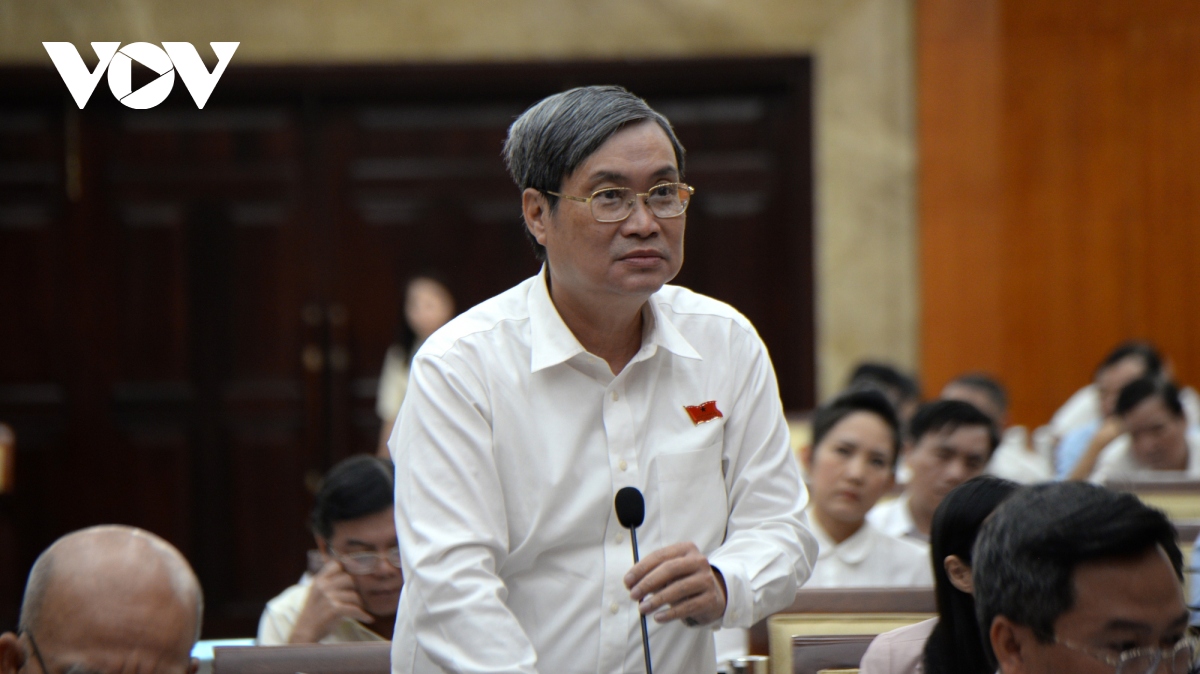
Mr. Vuong Duc Hoang Quan, Member of the Ho Chi Minh City People’s Council (Photo: Ha An)
Mr. Vuong Duc Hoang Quan, a member of the Ho Chi Minh City People’s Council, pointed out that the city already has Resolution 98, which provides several superior mechanisms. However, there may be future issues that were not fully considered when crafting the resolution. Therefore, Mr. Quan suggested that the city should clarify its approach and choose a suitable economic model from options such as a maritime economy, urban economy, green economy, circular economy, digital economy, or sharing economy. He emphasized the importance of selecting priority industries based on global trends and market demands rather than solely on the city’s current strengths.
According to Mr. Vuong Duc Hoang Quan, while the proposed approach may be suitable for provinces and cities in general, its applicability to Ho Chi Minh City, the country’s driving force, needs careful consideration. It is essential to distinguish between the challenges and solutions common to all provinces and those specific to a metropolis, as well as those unique to Ho Chi Minh City.
“Based on this differentiation, we can then propose three sets of mechanisms: first, mechanisms for socio-economic development applicable to all provinces; second, mechanisms tailored to metropolitan areas; and third, special mechanisms for Ho Chi Minh City to address its particular challenges and strive for goals on par with other major cities in Southeast Asia and Asia,” Mr. Quan emphasized.
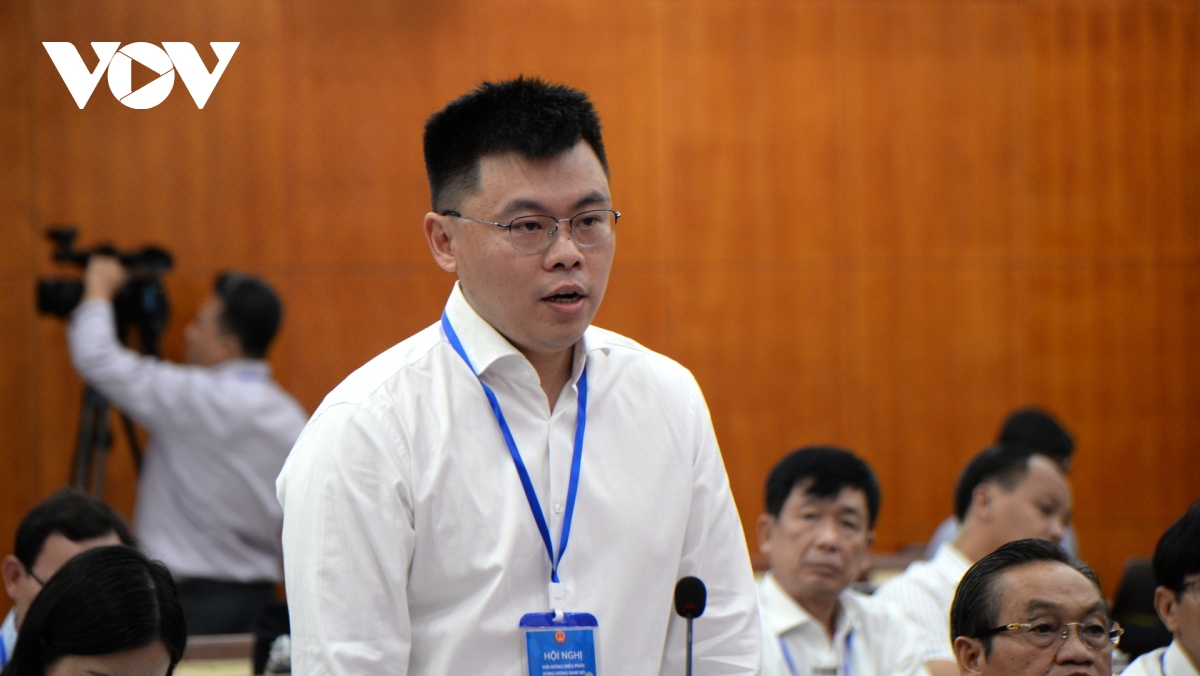
Mr. Truong Minh Huy Vu, Vice Director of Ho Chi Minh City Institute for Development Studies (Photo: Ha An)
Mr. Truong Minh Huy Vu, Vice Director of the Ho Chi Minh City Institute for Development Studies, recalled that around the same time last year, the city officially adopted Resolution 98, which was likened to a “guiding light” for addressing socio-economic issues. And this year, a new “guiding light” has emerged in the form of the two master plans currently being developed by the city: the “Ho Chi Minh City Master Plan for the period 2021-2030, with a vision towards 2050” and the “Adjusted Master Plan for Ho Chi Minh City towards 2040, with a vision towards 2060.”
According to Mr. Truong Minh Huy Vu, although these master plans have not yet been officially approved, their contents are already quite clear, and the city should seize the opportunity to take action.
“I propose that we expedite the implementation of projects and constructions based on these nearly completed master plans. Let’s not wait and instead take action now, just as we did with Resolution 98 last year. Let’s run while we’re queuing up,” suggested Mr. Truong Minh Huy.
Overcoming Hesitation with Bold Actions
According to the master plan, Ho Chi Minh City aims for a GRDP growth rate of 8.5% to 9% during the 2021–2030 period. Mr. Phan Van Mai, Chairman of the Ho Chi Minh City People’s Committee, acknowledged that this target is very challenging. However, the city has a well-thought-out scenario, plan, and solutions, along with necessary investments, to achieve this goal. He also expressed the city’s aspiration to achieve double-digit growth in the post-2030 period.
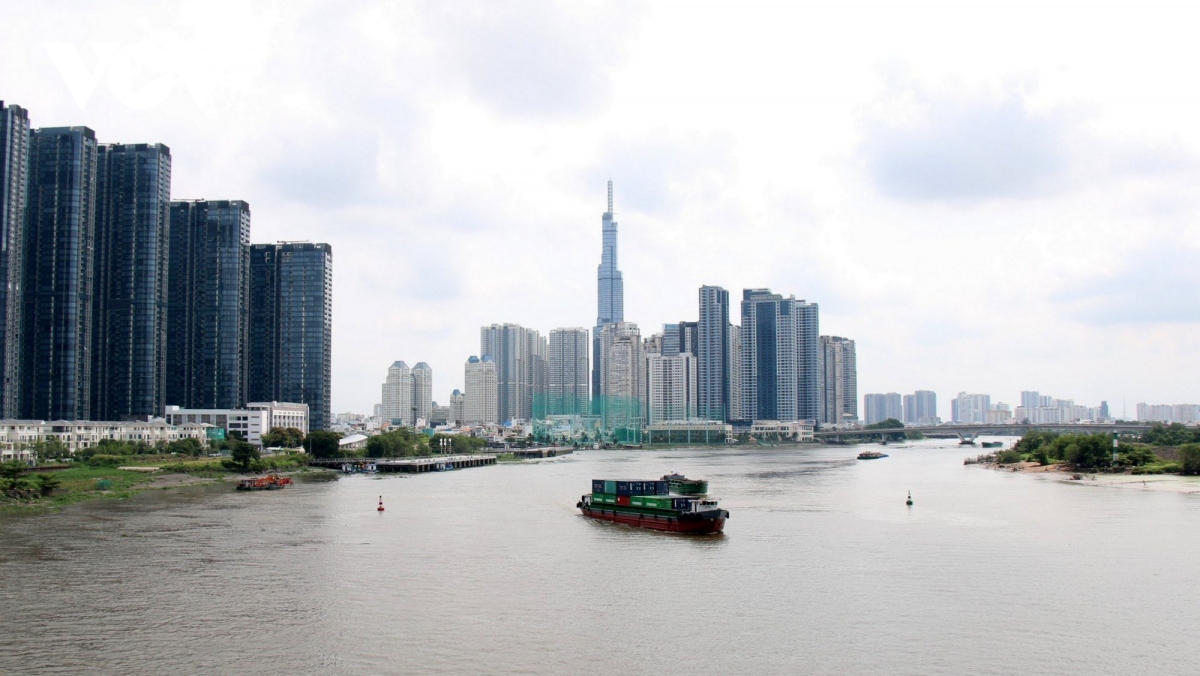
Ho Chi Minh City is working on its Master Plan for 2021-2030, with a vision towards 2050 (Illustration: Ha An)
To achieve this goal, Ho Chi Minh City has developed a detailed plan that includes identifying key investment areas, breakthrough solutions, and allocating appropriate resources. This is accompanied by mechanisms to mobilize resources for development and address identified bottlenecks.
Mr. Phan Van Mai assured that the growth scenarios, average income, and population size have all been meticulously calculated using formulas and models with defined input factors, guaranteeing the desired outcomes.
To accomplish these objectives, Ho Chi Minh City must demonstrate strong political determination and put in place concrete plans to mobilize its forces for development. The city will focus on critical areas, including institutional reforms, infrastructure development, metro rail expansion, economic restructuring, and resource mobilization. Emphasizing the importance of human resources, Mr. Phan Van Mai noted that this aspect was highlighted in the feedback received from the government and the appraisal council.
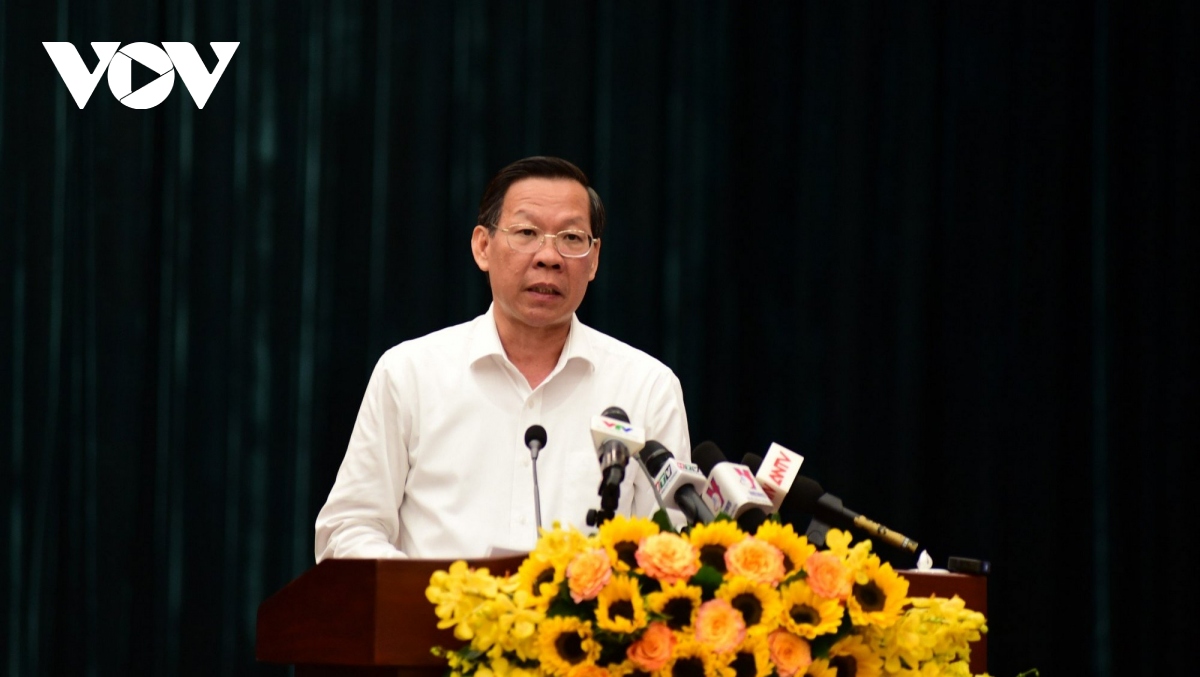
Mr. Phan Van Mai, Chairman of the Ho Chi Minh City People’s Committee, delivering his speech (Photo: Ha An)
“We need to overcome our current hesitation and embrace a bolder mindset and more proactive actions, as emphasized by the General Secretary, to maintain our position as a dynamic and innovative locality that takes the initiative in finding solutions. With this spirit, we will successfully implement this master plan and achieve the best possible outcomes,” asserted Mr. Phan Van Mai.
The “Ho Chi Minh City Master Plan for the period 2021-2030, with a vision towards 2050,” once approved, will serve as the overarching framework for other plans, including urban and sectoral master plans. Therefore, it is crucial to conduct a thorough review to ensure consistency and compatibility with the city’s previously approved urban and sectoral master plans.
Proposed Planning for Adding 2 New Cities in Ho Chi Minh City
According to Architect Ngô Viết Nam Sơn, Ho Chi Minh City should consider planning two cities within the city in the south and north.

